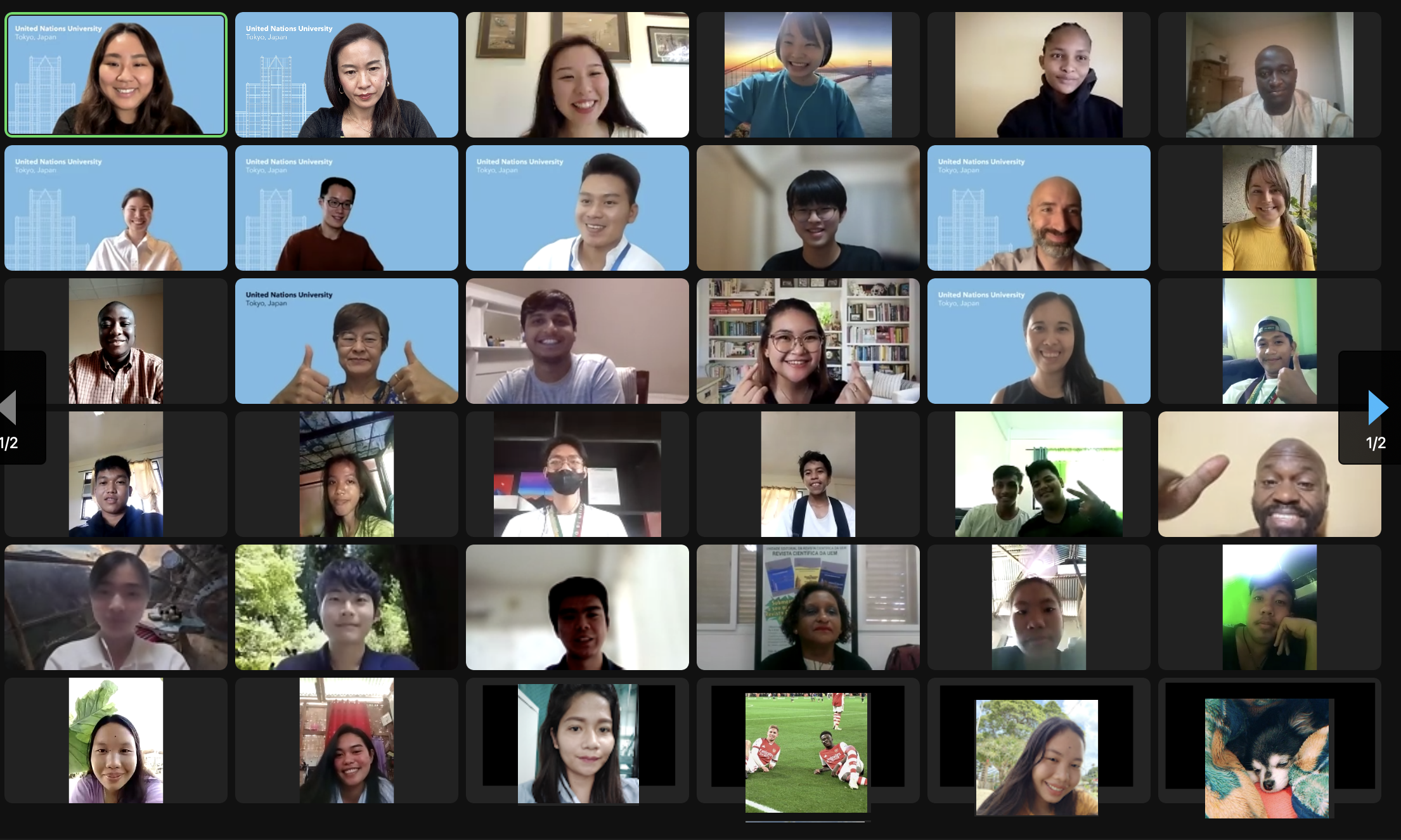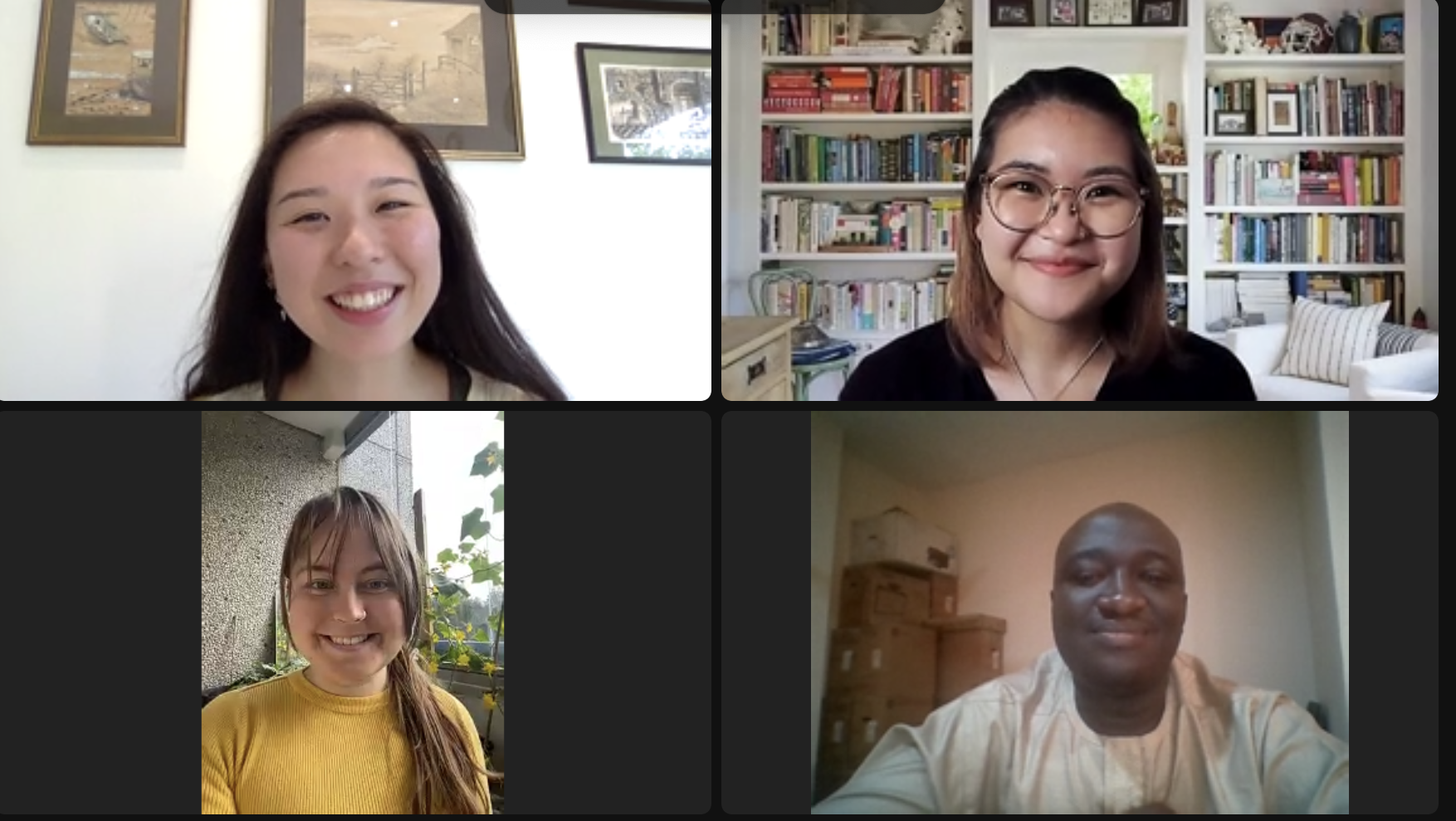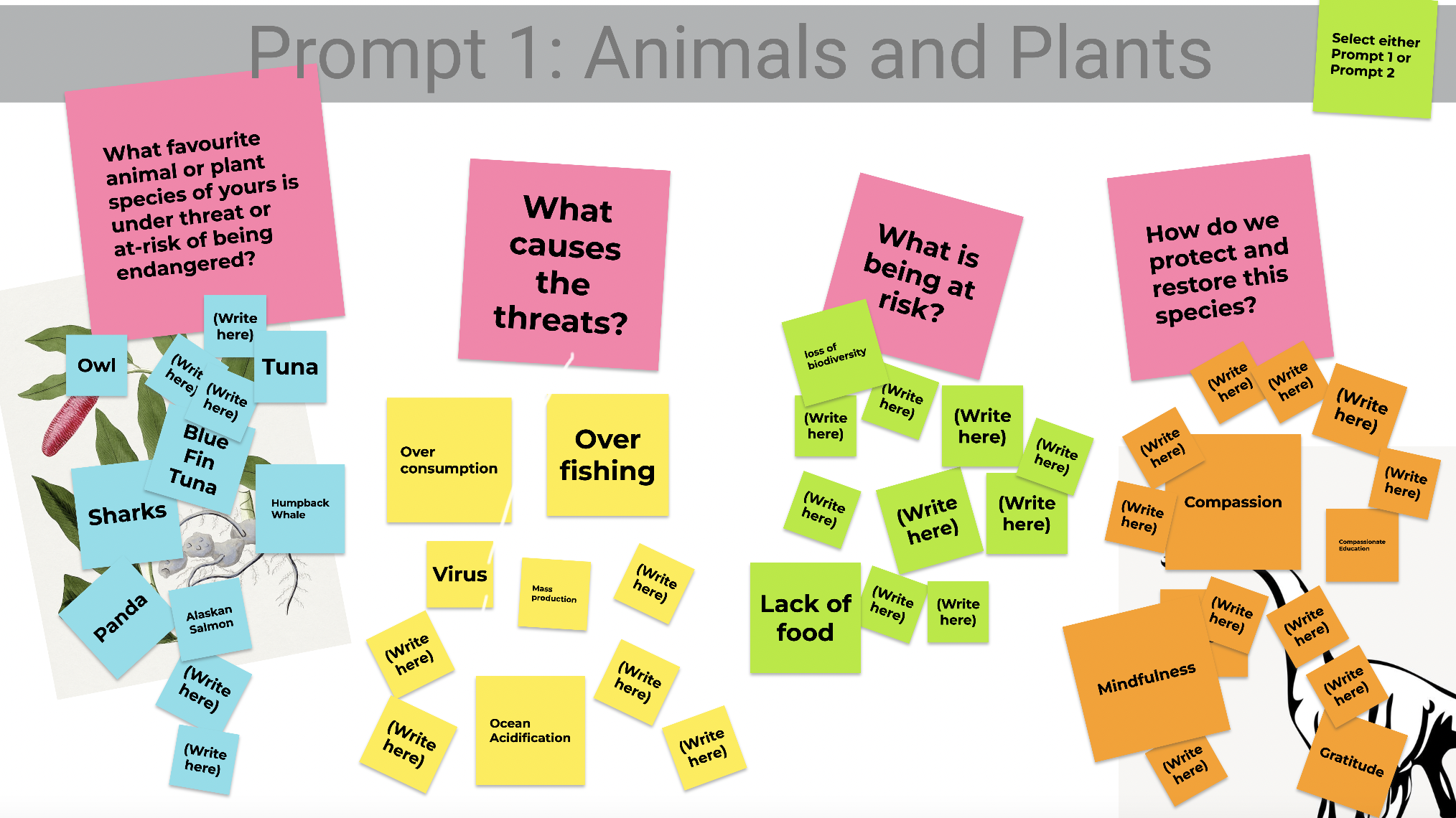RCE Youth Webinar Inspires Actions for Biodiversity Conservation
Highlights
- The second RCE Youth Webinar was held on 12 August, 2022 to celebrate International Youth Day 2022.
- Keynote speakers shared their experiences on conservation activities, and artists presented artworks inspired by biodiversity.
- Details for the 2022 RCE Youth Biodiversity Art Challenge were announced, calling on youth from around the world to express themselves through art, to highlight the species, habitats, and ecosystems that we need to work to protect.
- Participants created mood boards in an interactive workshop, visualising the places and species impacted by biodiversity loss, and actions that can be taken to conserve them.
 The RCE Youth Webinar 'Art, Actions, and Perspectives for Biodiversity Conservation' was held online on 12 August, 2022 to celebrate International Youth Day 2022. Bringing together participants from 23 countries across the world, the event highlighted examples of youth-led conservation activities to address biodiversity issues, and featured artists sharing how they express and inspire others to protect biodiversity.
The RCE Youth Webinar 'Art, Actions, and Perspectives for Biodiversity Conservation' was held online on 12 August, 2022 to celebrate International Youth Day 2022. Bringing together participants from 23 countries across the world, the event highlighted examples of youth-led conservation activities to address biodiversity issues, and featured artists sharing how they express and inspire others to protect biodiversity.
In opening remarks, Dr. Jonghwi Park (Head of Innovation and Education, UNU-IAS) welcomed all participants and thanked the Ministry of Environment, Government of Japan, for their support of the Global RCE Network. Noting the current proportion of youth in the world (15.5%) as the largest generation of young people in history, Dr. Park emphasised how crucial it is to create an environment for them to unleash their full potential to achieve the SDGs by 2030.
Congratulatory remarks were given by Mr. Reo Kawamura (Director of Office of Environmental Education, Ministry of the Environment, Japan), where he highlighted the empowerment of youth (one of the Priority Action Areas of the ESD for 2030 framework) as central to the promotion of education for sustainable development (ESD). Mr. Kawamura noted creative and original solutions by youth are essential to the realisation of sustainable development, and stressed their continued focus to enhance youth empowerment, participation, and partnerships through ESD, including via the Global RCE Network.
 The first keynote speech was presented by Daria Chekalskaia (environmental engineer and climate communicator) on ‘Making carbon gardening attractive’. Ms. Chekalskaia spoke about her journey towards gardening, which stemmed from learning of the impacts the global food system has in driving biodiversity loss. She introduced nature-based practices such as carbon gardening, regenerative gardening, and permaculture, as ways to encourage biodiversity and sequester carbon, and provided tips for the audience to begin their own gardening journeys.
The first keynote speech was presented by Daria Chekalskaia (environmental engineer and climate communicator) on ‘Making carbon gardening attractive’. Ms. Chekalskaia spoke about her journey towards gardening, which stemmed from learning of the impacts the global food system has in driving biodiversity loss. She introduced nature-based practices such as carbon gardening, regenerative gardening, and permaculture, as ways to encourage biodiversity and sequester carbon, and provided tips for the audience to begin their own gardening journeys.
In the second keynote presentation, Mr. Muktar Ahmad (RCE Zaria) shared his experience on a project conducted by RCE Zaria to conserve the Rimi (Kopak) tree, an endangered tree species in Zaria, Nigeria. The project created a geospatial database to monitor vegetation change and attributes of endangered tree species, and mobilised youth to participate in the geotagging activities. Despite challenges such as a lack of public awareness about the importance of plant cover protection, the project found that when both youth and the community understood the value of protecting endangered species, they were more receptive to conservation.
Following the keynotes, details for the 2022 RCE Youth Biodiversity Art Challenge were announced, calling for submissions from youth around the world. The Challenge, now in its second year, is being run by the Global RCE Service Centre (UNU-IAS) in partnership with UNESCO, providing a platform for young eco-artists to share their voice and inspire others to take action on conserving biodiversity through art.
 An awardee from the 2021 RCE Youth Climate Art Challenge, Ms. Lian Sabella Castillo (RCE Yokohama) took participants through some of her artworks inspired by her local biodiversity, and her process for creating these. These included critically endangered birds due to their habitats being destroyed, and scenes depicting impacts from environmental degradation. Another artist, and youth environmental activist, Ms. Erica Lotus highlighted some of her works representing cycles of interconnection, and emphasised that our actions, words, and impacts make us all ancestors of the future. By translating environmental issues through art, her hope is to connect people and to spread awareness.
An awardee from the 2021 RCE Youth Climate Art Challenge, Ms. Lian Sabella Castillo (RCE Yokohama) took participants through some of her artworks inspired by her local biodiversity, and her process for creating these. These included critically endangered birds due to their habitats being destroyed, and scenes depicting impacts from environmental degradation. Another artist, and youth environmental activist, Ms. Erica Lotus highlighted some of her works representing cycles of interconnection, and emphasised that our actions, words, and impacts make us all ancestors of the future. By translating environmental issues through art, her hope is to connect people and to spread awareness.
A workshop led by Mr. Jerome Silla and Ms. Sawaros Thanapornsangsuth (UNU-IAS), tasked participants with brainstorming and creating a mood board to answer one of the questions posed by the RCE Youth Biodiversity Art Challenge. The creations by the groups featured places and species impacted by biodiversity loss, and delved into the threats, reasons to protect, and actions communities can take to conserve them. Throughout the groups, it was clear that it is vital to connect with what we are trying to preserve, and that we must work towards transforming our societies to think more mindfully in various spheres.
Presentations
'Making Carbon Gardening Attractive' - Ms. Daria Chekalskaia (Youth Climate Activist)
'Youth Engagement in Conservation of Endangered Tree Species – Lessons from the Conservation of Kopak Tree within Zaria Region' - Mr. Muktar Ahmad (RCE Zaria, Nigeria)
'Raptor the Day // Life on Canvas' - Ms. Lian Sabella Castillo (RCE 2021 Youth Art Challenge Awardee from RCE Yokohama, Japan)
'Compassion in Changing Climates - Storytelling through Art' - Ms. Erica Lotus (Youth environmental activist and artist)


